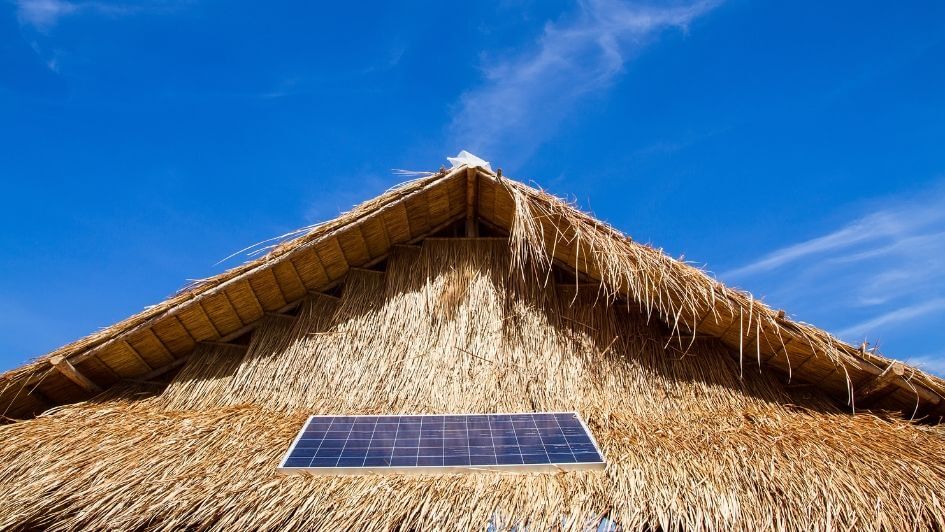As deputy director for Africa for the World Resources Institute in Kenya, Rebekah Shirley works with local clean energy companies that demonstrate to the world that Africa is invested in fighting climate change, she said in a TED Talk.
They include Jeffrey, who runs a solar company that focuses on commercial and industrial customers, and Samir, who operates a solar irrigation company.
“These are real salaries, real rents, real mortgages, real savings being put on the line every day. Is that not the utmost confidence in Africa's clean energy business potential?” she said.
In spite of these local efforts, the world likes to remind Africa about its vast clean energy potential and the need to take advantage of it. But the world has failed to provide one missing ingredient: “The financial flows to deliver that potential remain troublingly scarce,” she said.
Africa needs policy changes and an infusion of finance to take advantage of its abundant clean energy resources and provide clean electricity to the millions without it.
Sub-Saharan Africa experiences population growth, but slow electrification
Sub-Saharan Africa (SSA) is lagging behind in electricity access compared to the rest of the world, with population growth outpacing electrification. According to the International Energy Agency (IEA) electricity access in SSA increased from 46 percent in 2018 to 48 percent in 2020. However, with a population increasing by 28 million between 2018 and 2020, the region's share of the global access deficit increased from 71 percent to 77 percent, leaving over three-quarters of the 568 million people without electricity access living in SSA.
The lack of energy access “greatly inhibits green, resilient and inclusive development of many countries in SSA,” said the World Bank. To meet its energy and climate goals, Africa needs US $190 billion in investment annually between 2026 to 2030, with two-thirds going to clean energy, according to the IEA.
Despite this need and a potentially lucrative return on investment–the African Development Bank estimates the renewable energy market potential to be US $11 trillion– local renewable energy companies face many challenges. Financing help from other countries will be necessary, along with policies to tap into SSA's considerable renewable energy potential.
$190 billion/year of investment needed
To achieve its energy and climate goals, Africa needs $190 billion of investment a year between 2026 to 2030, with two-thirds of this going to clean energy, the IEA said.
Rather than pouring money into fossil fuels, countries need to focus on distributed renewable energy (DRE)—the fastest and most cost-effective option, said the World Bank.
“While DRE is now attracting private sector financing, this support is not at the scale that is needed,” said the World Bank.
DRE systems play an important role
For the last 10 years, 20 percent of all new electric connections in SSA have been DRE systems. In fact, the cost of providing electricity services with mini-grids has decreased since 2018, from a levelized cost of energy of $0.55/kWh to $0.38/kWh in 2021, said the World Bank.
But the local renewable energy companies installing DRE face challenges that increase their costs, said Shirley in her TED Talk.
The challenges include:
-
The hidden costs of risk perception.
-
Paying back U.S. dollar loans in depreciating local currency, and
-
Expectations that renewable projects should yield conventionally high rates of return while raising revenues from customers who earn as little as a dollar a day.
What’s needed are commitments to deliver long-term, low-cost financing from countries and development finance institutions, Shirley said.
In addition, regulatory obstacles need to be overcome to ensure the U.S. and other countries invest in SSA’s clean energy future.
State-owned national power utilities often don’t provide any incentives for investing in renewables and often make such efforts difficult. Prices are often kept low on political grounds and there’s little access to electricity markets, which isn’t attractive to private financiers and investors, according to “Financing Renewable Energy in Developing Countries,” from the United Nations Environment Programme (UNEP).
Recommendations from the United Nations Environment Programme
A first step is eliminating subsidies to fossil fuel development, UNEP said.
UNEP called for additional steps, including:
-
Creating a national energy vision with renewable energy targets that provide certainty for investors. “They are important because they reassure the private sector of what direction national authorities are taking for the country’s energy journey,” said UNEP. The targets could include renewable energy credits and other measures that create a market mechanism for ensuring clean energy is generated in the least expensive manner, said UNEP.
-
Providing grants, rebates, and fiscal incentives that would encourage private finance in renewable energy.
-
Tax incentives for renewable energy generators.
With new policy measures and much more financing in place, SSA could move more quickly toward decreasing its dependence on fossil fuels and electrifying with clean energy. The carbon emitters worldwide need to come forward and help, said Shirley.
“Climate justice is heavy emitters cooperating to realize clean energy futures for those countries that have been denied, locked out of their fair share of a global carbon budget. So today, let's cut past the talk and focus on unleashing the avalanche of a clean-energy future that Africa is ready to deliver,” Shirley said.
Lisa Cohn specializes in writing about energy and is co-founder of Microgrid Knowledge and RealEnergyWriters.
